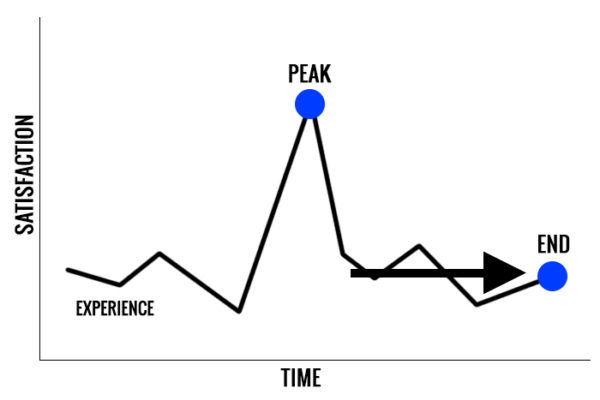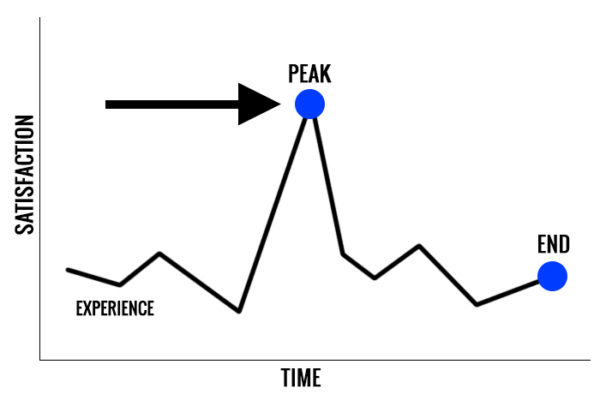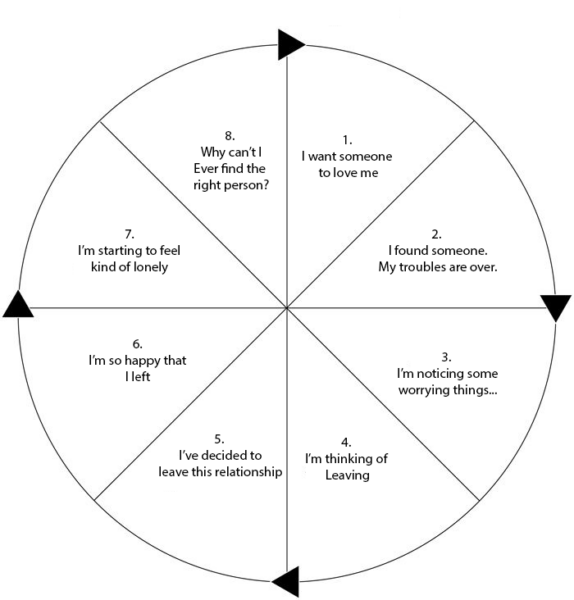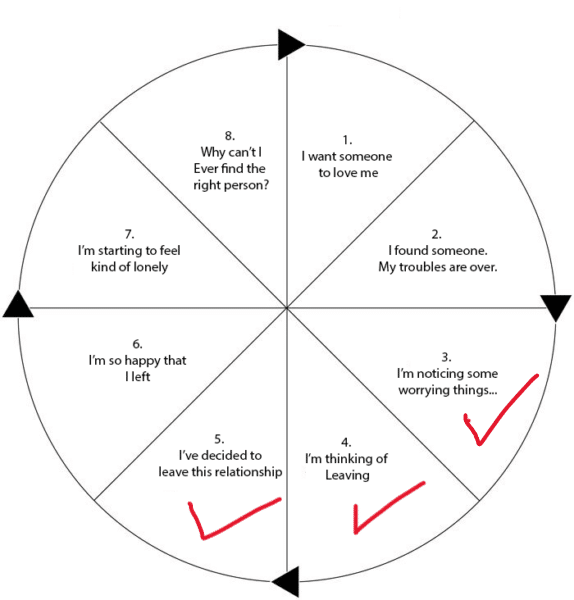Today we’re going to talk about one of the most common situations that our clients find themselves in, dealing with an ex who is fawning over their “phantom ex.”
Officially, the phantom ex is a past partner that you can’t seem to stop thinking about. Instead, you hyper focus on them and romanticize your time together. Even when that time together wasn’t all that great.
After studying breakups for ten years we are pretty confident in the fact that a lot of exes who classify as avoidants will exhibit this obsession throughout your relationship.
So today, I’d like to take an in-depth look at what I’ve been calling “the avoidant phantom ex syndrome.”
Let’s begin.

What Are Your Chances of Getting Your Ex Boyfriend Back?
Take the quizDefining The Avoidant Attachment Style
The first place to start if you want to talk about the phantom ex isn’t actually with defining the phantom ex. It’s actually by understanding the avoidant attachment style.
Now, I’ve talked a lot about the avoidant attachment style in the past,
But officially, the avoidant is defined as,
The Avoidant Attachment Style: A person who is protective of their independence, so much so, that when they enter into a relationship that they deem as threatening to that independence they will withdraw and potentially leave it.
Now, perhaps the biggest misunderstanding about the avoidant attachment style is that they don’t crave intimacy, they do. In fact, many times when you study them you’ll find that the avoidant wants nothing more than to find someone that they can get close to.
But therein lies the paradox.
- They want someone to be close to
- But they don’t want to let anyone close enough because they fear they’ll lose their independence
And so often you’ll find that avoidants have all these crazy coping mechanisms in place.
And that’s really where the phantom ex syndrome comes into play.
The Phantom Ex Syndrome Explained In Detail
My argument is a simple one. I think that most of the times an avoidant is using the phantom ex as a way of self sabotaging a relationship.
Free to Attach, one of the best websites on avoidants has this to say about phantom exes,
An avoidant person often has a story of a perfect ex in a relationship that wasn’t fully realised, the ‘one that got away’ to whom no one else can measure up. In reality the idealised relationship was often lacklustre or insecure and unlikely to be highly functional
So, this would seem to suggest that the phantom ex isn’t really about the ex but more about the mechanism to keep the current person from getting close.
Essentially, the phantom ex is used as a way to perpetually keep the person they are with from ever getting close enough to threaten that independence.
And if you really think about it, it makes a lot of sense.
For an avoidant, the perfect relationship is one in which they can fawn from afar. So, often you’ll see them use this phantom ex as a measuring stick.
“Oh, you aren’t as good as “so and so”.” I guess you’re not the one.
The Peak End Rule Definitely Is Put Into Practice
Continuing on from Free To Attach,
The phantom ex operates because there is/was distance, not because the relationship was successful. But a fixation with a past partner affects budding new relationships, blocking them from getting close to someone else.
What’s funny is that often if you look at a persons time with their phantom ex it’s usually not all that pleasant. So, why the nostalgia?

What Are Your Chances of Getting Your Ex Boyfriend Back?
Take the quizThe best explanation I’ve been able to come up with is that it has something to do with the peak end rule.
Wikipedia defines the peak end rule as,
The peak–end rule is a psychological heuristic in which people judge an experience largely based on how they felt at its peak and at its end, rather than based on the total sum or average of every moment of the experience. The effect occurs regardless of whether the experience is pleasant or unpleasant.
So, essentially you have these two distinct points that are being judged,
- The Peak
- The End
So, with the phantom ex the avoidant is employing selective memory. Well, mostly!
There’s actually another interesting thing about nostalgia we’ve learned about avoidants.
Once again, pulling from Free To Attach,
Avoidants are free to long for an ex once that person is unavailable out of the relationship, and typically out of contact so they are untouched by actual engagement and their deactivation systems aren’t triggered, revealing their long-suppressed attachment and switching their operating attachment wound from the fear of engulfment to fear of abandonment.
So, what ends up happening is that after a breakup an avoidant doesn’t really view their ex as this great lost love. That usually doesn’t happen until a few things occur,
- Enough time has gone by
- They haven’t been in contact for a while
Only when they feel “safe” will they begin to remember the relationship but that’s were the peak-end rule comes into play. Immediately after a breakup what are you typically focused on?
The end, right?
However, as time goes by where they haven’t been “triggered.”
Usually they get triggered if you won’t leave them alone but that’s a whole other topic.
They start to misremember the experience and forget about the end and remember the peak moments. When this occurs they start to really feel that nostalgia.
But this brings up an interesting philosophical question. Is there only one phantom ex for avoidants or many?
The Case For Many Phantom Exes
Take a look at this graphic I put together,
This is what I call my avoidant self fulfilling cycle loop. There are eight stages to it,
- The avoidant starts by thinking “I want someone to love me”
- Next when they’ve found that person they think, “This is great my love troubles are over.”
- Then the avoidant person starts to notice some anxious behaviors from the other person and the cracks begin to form
- Once this goes on long enough the avoidant person starts debating on when they’re going to leave
- Then they actually leave
- Then they feel super happy about the fact that they left. But if enough time goes by where they’re left alone they start to feel a bit lonely
- Which leads them to start thinking that they can’t ever find the right person for them
- Then they start thinking “I want someone to love me.”
In almost every case when dealing with an avoidant you can chart their “progress” on this cycle but what I find interesting about it is this phase right here,
Like I said above, the misconception that people have about avoidants is that they don’t want love. That’s categorically false, in many cases you’ll find there’s nothing more that an avoidant wants than to find “the one.” However, they can’t get out of their own way.

What Are Your Chances of Getting Your Ex Boyfriend Back?
Take the quizWhenever they feel themselves open up they’ll find these reasons to sabotage the relationship to keep you from getting close.
Often this is where the phantom ex pops up.
Now, the argument I’m going to make is that many avoidants don’t have just one phantom ex but many.
And that’s why the peak end experience is important to understand. What I’ve noticed avoidants doing is not just choosing one person to focus on but rather peak moments in relationships across their history.
This causes them to be caught in this sort of grass is greener loop.
The Frankenstein Phantom Ex
Have you ever seen that movie, Her?
The premise is simple, a guy falls in love with AI.
That’s pretty much it but the turning point for the movie comes when he realizes that his experience that he felt was unique to this robot is essentially identical to other people who are doing the same things.
It sort of cheapens it for him.
This is a little how I experience avoidants and phantom exes.
Rather than focusing on one peak moment from one person they almost Frankenstein a bunch together to create “the perfect person.”
One that you’ll never be able to measure up to because no one is perfect. It’s so on brand for them too because it’s the perfect way of ensuring no one can ever get close.
This Frankenstein ex is a collection of their greatest hits all squeezed together.
All the peak moments.
That’s what you are being compared to and that’s why inevitably they are caught in this grass is greener loop that they can’t ever escape.





BITA
May 5, 2025 at 9:07 am
And waht if this phantom Ex was really passionate and the connection was realß
Anon
December 2, 2024 at 10:57 pm
I don’t know if I buy this, but maybe I am just not that kind of person or have dealt with that kind of person.
In my case, I was caught up on things for a long time, but it’s not because I thought they were so great. Indeed, I did like a lot of things about them that are difficult to find in others, but throughout the time together, I was cognizant of things about her I didn’t like.
I don’t think I was stuck on wanting her back, ever. I knew that it was probably never going to work, and I agreed with the “breakup”. However, what kept me hung up on it was not understanding how someone could treat me and apparently use me and then discard me the way she did. What finally helped me get over it, 10 years later, was finally allowing myself to fully feel that pain, move from blaming her (protective feelings) to feeling sad/worthless (vulnerable feelings), and learning how to love myself. So I guess I was suppressing the pain and trying to be a “man” that whole time. I think my parents and the dynamic I had with them growing up probably has a lot to do with me even getting into that situation in the first place. I have realized as an adult that there really is not anyone out there who really does or even can care about you (at least as far as I am concerned with my parents), and so you have to provide that for yourself, and take the time/impose the necessary boundaries to do so.
Spencer
November 6, 2024 at 8:19 pm
yes. to all of this. the further i read the more it made sense. now the only thing that makes sense is no contact, which enables me to love me, and an opportunity to meet someone who actually wants to build a future with you! Also, you probably didnt do anything wrong! That/s what I couldnt understand, I was so good to her!!! The stories she told about how things fell apart with the last guy – how he promised to be waiting when she got out of rehab and then suddenly had a new girlfriend , and the latest guy that wont respond to texts was teaching yoga classes and a pro montain climber, blah blah blah. Makes you feel horrible. But the push was good. It just hurts so much still. And its been months. Thank you for explaining everything, I am honestly relieved more than anything. And even if shestill is in contact with those guys, or IDK WORKS WITH ONE… you’ll feel much better after reading this and just blocking them forever. you dont wanna spend your life with someone who creates a feedback loop for themselves and always blame shifts the problems onto the next person so they can closet use.
Sara I Cruz
October 8, 2024 at 10:16 pm
But then do you become the phantom ex?
Nick
July 19, 2022 at 7:15 pm
Chris – This article is right on the money. I broke up with my DA ex 6 months back. We dated for 3 months before she lost interest in me. Throughout the 3 months we dated she kept talking about a perfect ex who had broken up with her and if he ever came back, she would dump me. She was obviously talking about her phantom ex. I hadn’t read Attachment Theory until then and I had not discovered you either.
I got ghosted by my ex after 3 months of perfect relationship. We got along really well during those 3 months. I tried to reach out to her every now and then to win her back and I wish I had read your articles. I let her go emotionally 2 months back and have not contacted her since.
I have started dating someone new and turns out she’s an avoidant too but this time around, I know exactly what to do. I give a lot of space now but it seems like even I have gone from being anxious to avoidant now.